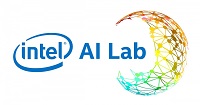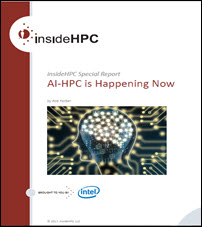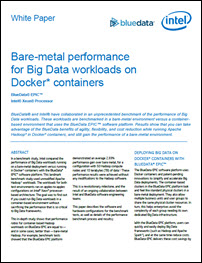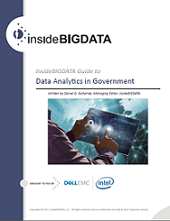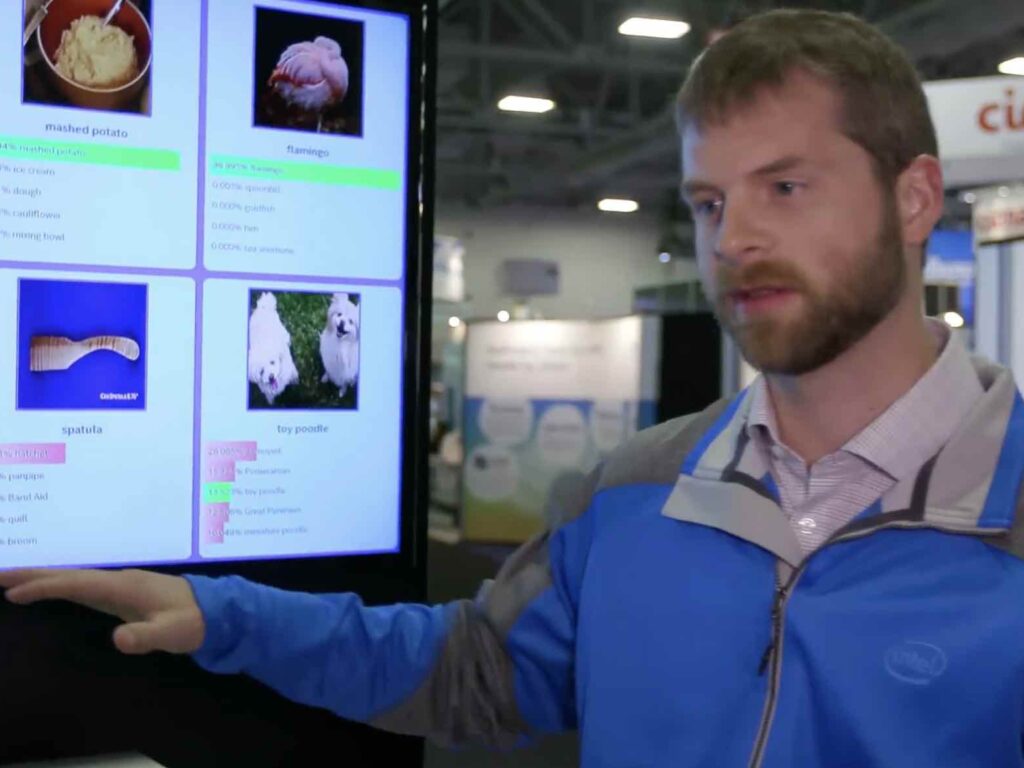Many organizations follow an old trend to adopt AI and HPDA as distinct entities which leads to underutilization of their clusters. To avoid this, clusters can be converged to save (or potentially eliminate) capital expenditures and reduce OPEX costs. This sponsored post from Intel’s Esther Baldwin, AI Strategist, explores how organizations are using converged HPC to combine HPC, AI, and HPDA workloads.
Using Converged HPC Clusters to Combine HPC, AI, and HPDA Workloads
Intel’s AI Lab Presents Several Ground-breaking Research Papers
Researchers at Intel’s AI Lab recently presented several compelling research papers at the International Conference on Machine Learning (ICML) (June 10-15) and the Conference on Computer Vision and Pattern Recognition (CVPR) June 16-20.
Intel IT Serves Up Innovative Applications of AI, Analytics and Collaboration
One telling sign that AI industry leading companies truly believe in the technologies they promoting across the globe is how much they’re using these same technologies internally. An excellent case-in-point is Intel IT, the IT services arm of giant Intel Corp.
Exploring the Convergence of AI, Data and HPC
The demand for performant and scalable AI solutions has stimulated a convergence of science, algorithm development, and affordable technologies to create a software ecosystem designed to support the data scientist. A special insideHPC report explores how HPC and the data driven AI communities are converging as they are arguably running the same types of data and compute intensive workloads on HPC hardware, be it on a leadership class supercomputer, small institutional cluster, or in the cloud.
Special Report: AI-HPC is Happening Now
HPC and the data driven AI communities are converging as they are arguably running the same types of data and compute intensive workloads on HPC hardware, be it on a leadership class supercomputer, small institutional cluster, or in the cloud. Download the insideHPC Special Report, brought to you by Intel, to learn more about AI-HPC and how today’s businesses are using this technology.
BlueData, Intel Compare Bare-Metal & Containers for Big Data Workloads
Has your business ever tried to decide between a bare-metal environment or a container-based environment for dealing with Big Data needs? BlueData and Intel collaborated to discuss this very issue in a benchmark study of the performance of Big Data workloads.
Bare-Metal Performance for Big Data Workloads on Docker Containers
In a benchmark study, Intel compared the performance of Big Data workloads running on a bare-metal deployment versus running in Docker containers with the BlueData EPIC software platform. The study found that it is possible to run Big Data workloads in a container-based environment without sacrificing performance. The benefits include agility, flexibility, and cost efficiency. Data science teams can get on-demand Hadoop and Spark clusters, while leveraging enterprise-grade security in a multi-tenant architecture. Get the white paper to learn about this breakthrough benchmark study.
InsideBIGDATA Guide to Data Analytics in Government
This guide provides an in-depth overview of the use of data analytics technology in the public sector. Focus is given to how data analytics is being used in the government setting with a number of high-profile use case examples. Download this InsideBIGDATA guide to data analytics in government.
FPGAs Speed Machine Learning at SC16 Intel Discovery Zone
In this video from SC16, Intel demonstrates how Altera FPGAs can accelerate Machine Learning applications with greater power efficiency. “The demo was put together using OpenCL design tools and then compiled to FPGA. From an end-user perspective, they tied it together using Intel MKL-DNN with CAFFE on top of that. This week, Intel announced the DLIA Deep Learning Inference Accelerator that brings the whole solution together in a box.”
Pikazo: Deep Neural Network Art on Intel Architecture
In this video from the Intel HPC Developer Conference, Noah Rosenberg and Karl Stiefvater from Pikazo describe the company’s innovative Pikazo App for smartphones. “Pikazo was developed in 2015 using neural style transfer algorithms. It is a collaboration between human, machine, and our concept of art. It is a universal art machine that paints any image in the style of any other, producing sometimes-beautiful, sometimes-disturbing, always-surprising artworks. Pikazo allows novice artists to create impressive imagery via a technique known as neural style transfer.”


